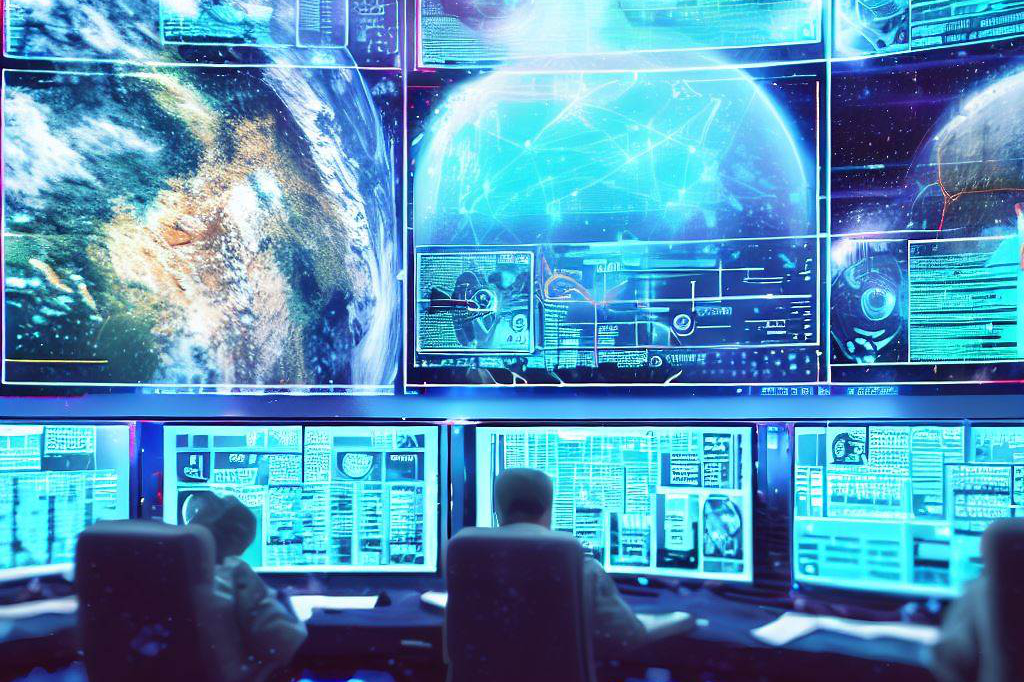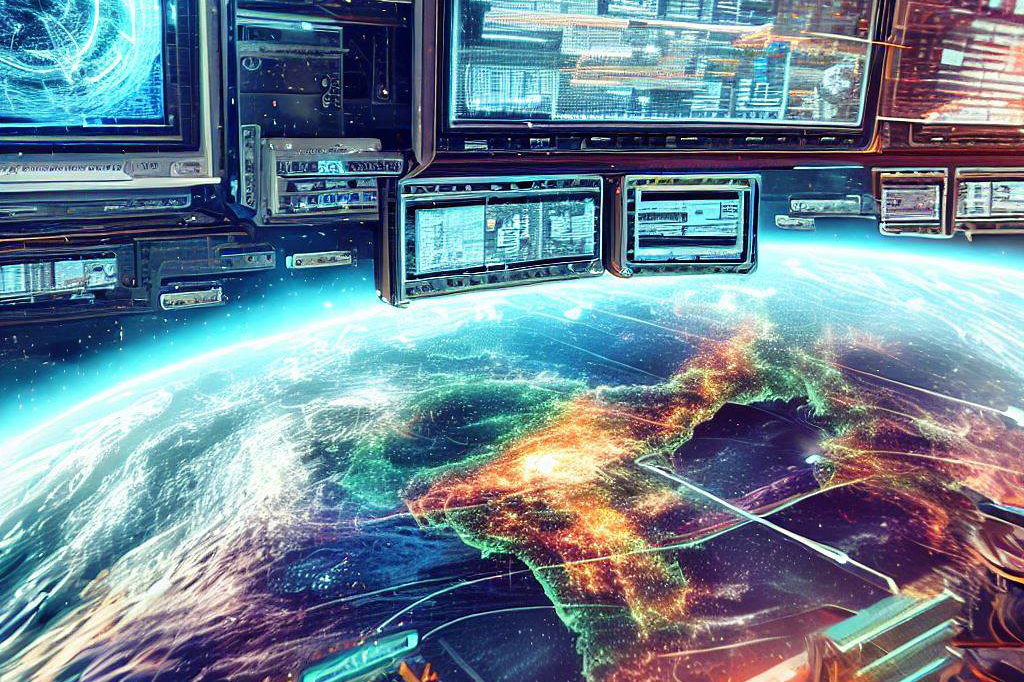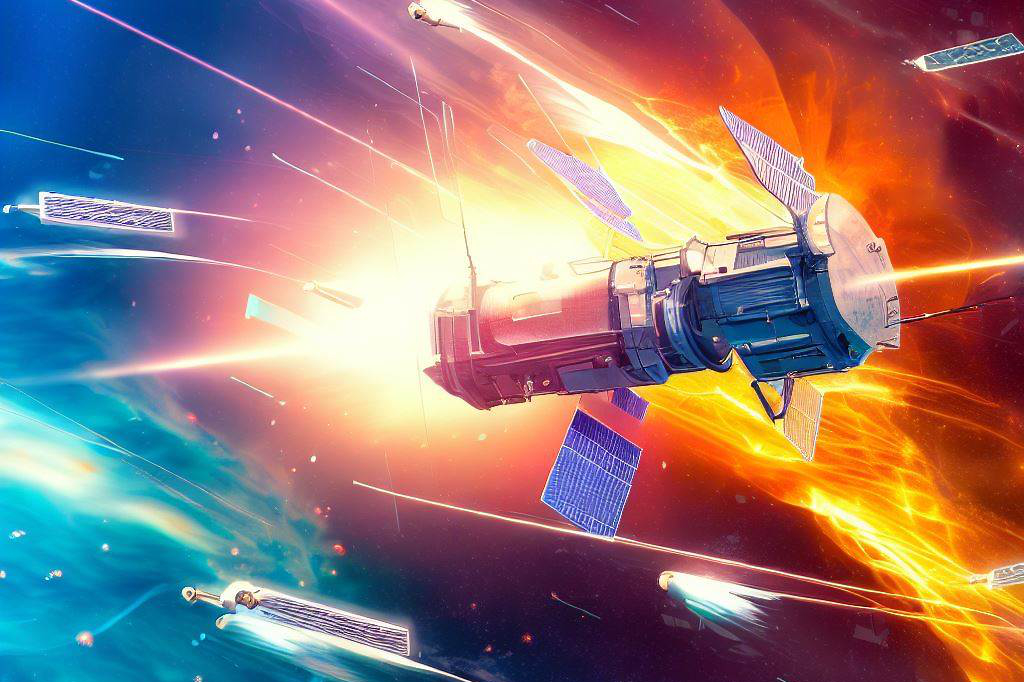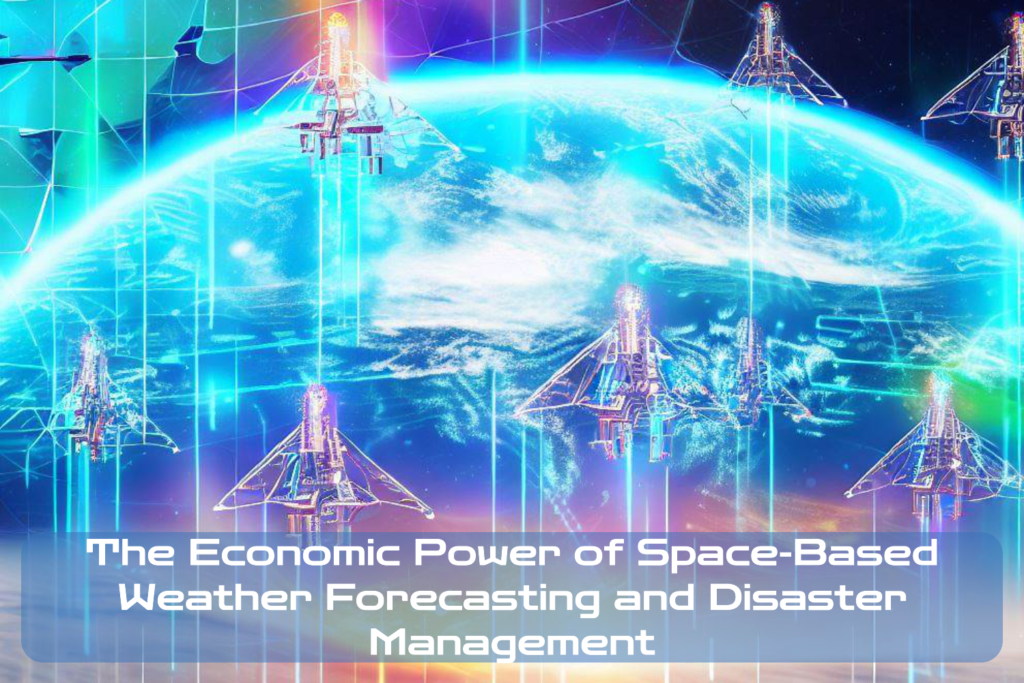Do you ever wonder how meteorologists are able to predict the weather with such accuracy? It’s not just magic or guesswork – it’s thanks to the use of space-based weather forecasting.
This incredible technology has revolutionized our ability to predict and prepare for extreme weather events. At its most basic level, space-based weather forecasting involves the use of satellites and other space-based instruments to monitor weather patterns across the globe.
These instruments collect data on everything from temperature, humidity, and wind speed, to cloud cover and precipitation. This information is then sent back to Earth, where it is analyzed by meteorologists using advanced computer models.
The importance of this technology cannot be overstated. Extreme weather events such as hurricanes, tornadoes, droughts, and floods can cause billions of dollars in damage each year.
By providing early warnings and accurate predictions of these events, space-based weather forecasting can help save lives, prevent property damage, and reduce economic losses. In addition, this technology can benefit a wide range of industries – from agriculture to shipping – by providing critical information on weather patterns that can help them make more informed decisions.
In recent years, we have also seen a growing use of space technology in disaster management – seeking better ways for emergency response teams’ coordination with scientific agencies in managing natural disasters such as earthquakes or tsunamis that cause catastrophic impacts on infrastructure as well as human life.
Space based-weather forecasting provides us with an opportunity for proactive rather than reactive measures, which helps our world become more resilient towards natural disasters, leading towards sustainable development goals
The Power of Space-Based Weather Forecasting

The benefits of space-based weather forecasting are numerous. First and foremost, it offers a significant improvement in accuracy compared to traditional methods that rely solely on ground-based observations.
The ability to track storm systems from above allows forecasters to see the bigger picture and make more precise predictions about things like wind speed, precipitation levels, and storm paths. Another important benefit is the early warning systems that space-based weather forecasting provides.
With a better understanding of upcoming weather patterns, officials can issue warnings for potential storms or natural disasters well in advance. This saves lives by giving people ample time to evacuate before danger strikes.
But it’s not just lives that are saved – space-based weather forecasting can also save businesses and industries significant amounts of money. For example, farmers rely heavily on accurate forecasts so they can plan their planting and harvesting schedules accordingly.
Similarly, airlines use forecasts to anticipate flight delays or cancellations due to bad weather. Shipping companies also benefit from this technology by avoiding dangerous routes during severe storms.
In short, the benefits of space-based weather forecasting cannot be overstated. By providing more accurate predictions and early warning systems while saving lives and money across industries such as agriculture, aviation, and shipping amongst others- it’s no wonder this technology has become so vital in modern-day society!
Disaster Management

Exploring the role of space technology in disaster management
Disasters can strike at any moment, leaving a trail of destruction and devastation in their wake. From earthquakes to hurricanes and tsunamis, natural calamities have the potential to wreak havoc on an unprecedented scale.
Fortunately, space technology has emerged as a powerful tool in disaster management, providing valuable insights and strategic advantages to organizations involved in relief operations. Space technology refers to the use of satellites and other advanced technologies to study the earth’s environment from space.
Satellites orbiting the earth can be equipped with sensors that can detect changes in atmospheric pressure or temperature, seismic activity, ocean currents, and more. These real-time data are then transmitted back to ground stations where they are analyzed by scientists who use them to make informed decisions about emergency response plans.
Real-world examples of satellite-based disaster management
One of the most notable examples of satellite-based disaster management is Hurricane Katrina – one of the deadliest hurricanes on record that struck the Gulf Coast region in 2005. Using a combination of satellite imagery and computer models, scientists were able to track Hurricane Katrina’s movements accurately days before it made landfall.
This information was critical in helping emergency responders prepare for what was about to come their way. Another example is Japan’s tsunami catastrophe that struck on March 11th, 2011.
Japan’s space agency (JAXA) provided data collected by its radar satellites, which allowed researchers to generate detailed maps showing areas affected by flooding after an earthquake triggered massive tsunamis across eastern Japan. The data helped identify areas where roads were blocked or destroyed so that rescue teams could get into those regions more quickly.
The benefits of using space technology for disaster management
If we look at some recent natural disasters, such as Cyclone Amphan that hit India and Bangladesh in 2020, we can see how space technology has played a critical role in disaster management. Improved response time has been one of the most significant benefits of using space technology for disaster management. With real-time data streaming in from satellites, emergency responders can better allocate resources and prioritize actions needed to save lives.
Another benefit is more accurate damage assessments. By analyzing satellite imagery, scientists can quickly assess the extent of damage caused by a natural disaster, providing decision-makers with much-needed information to plan their response.
Better coordination between agencies also plays a vital role in managing disasters more effectively; space-based technologies have helped bring various organizations together on the same platform to share data and resources seamlessly. Space technology holds immense promise for managing disasters more effectively.
As we move towards an era of rapid technological advancements and embrace new technologies such as AI and machine learning, it is essential to fully leverage the capabilities of space-based technologies. Doing so will help us save lives during emergencies and minimize economic losses caused by natural disasters.
The Economic Impact of Weather-Related Disasters

Weather-related disasters such as hurricanes, tornadoes, and floods can have a significant impact on the economy. In addition to causing loss of life and property damage, these disasters can also disrupt businesses and industries.
For example, Hurricane Katrina in 2005 caused an estimated $81 billion in damages and disrupted oil production in the Gulf of Mexico. The 2011 tsunami in Japan caused widespread damage to infrastructure and disrupted supply chains for industries such as electronics and automotive manufacturing.
In addition to the immediate impact of these disasters, there are also long-term economic consequences. Infrastructure damage can lead to higher costs for businesses and consumers as repairs are made.
Disruptions to supply chains can cause delays in production and distribution, which can harm industries that rely on just-in-time inventory management. Insurance claims from weather-related disasters can also lead to higher premiums for homeowners and businesses.
How Space-Based Weather Forecasting Can Mitigate Economic Losses
Space-based weather forecasting has the potential to mitigate economic losses caused by weather-related disasters. By providing accurate forecasts, early warning systems can be put into place which allows people to evacuate before a disaster strikes or take steps to protect their property.
This can help minimize loss of life as well as property damage. Space-based weather forecasting is also useful for industries such as agriculture, aviation, and shipping, which are particularly vulnerable to weather-related disruptions.
Accurate forecasts allow farmers to plan crop rotations around expected rainfall patterns, while airlines can adjust flight paths around storms. Shipping companies can avoid routes prone to rough seas or hurricanes.
The Cost Savings of Space-Based Disaster Management
In addition to mitigating economic losses from weather-related disasters, space technology is also useful for disaster management after a disaster has struck. Satellites equipped with sensors that detect changes in temperature or humidity levels allow emergency responders to quickly assess damage on the ground. This allows them to prioritize which areas require the most assistance and allocate resources accordingly.
Space-based disaster management can also lead to cost savings. For example, by accurately assessing damage, insurance companies can process claims more quickly, which reduces administrative costs.
Additionally, by quickly restoring infrastructure such as power lines or telecommunications systems, the economic impact of a disaster can be minimized. Overall, space technology has the potential to significantly reduce the economic impact of weather-related disasters and improve disaster management efforts.
Future Developments

Advancements in Satellite Technology
Space technology is advancing at an unprecedented rate, and as a result, the capabilities of space-based weather forecasting and disaster management are expanding. The satellite technology that is currently in use will continue to improve in accuracy, resolution, and speed.
There are already plans to launch new satellites that will provide even more precise information about weather patterns and natural disasters. There is also talk of using drones or unmanned aircraft systems (UAS) for aerial monitoring.
Increased Use of Artificial Intelligence
Artificial intelligence (AI) has been widely used in many areas of research, including space-based weather forecasting and disaster management. AI-powered algorithms can quickly analyze vast amounts of data from satellites and other sources to identify trends, predict patterns, and provide early warnings for natural disasters such as hurricanes, earthquakes, and floods.
As AI becomes more sophisticated, it will be able to provide real-time analysis of data from multiple sources to create highly accurate predictive models. This could help businesses better prepare themselves for potential natural disasters or weather-related events.
Expansion into New Areas
Space-based technology has already transformed the way we forecast weather patterns and manage natural disasters. In the future, this technology will expand into new areas such as climate change research, oceanography studies, or environmental monitoring.
With increasing concerns over climate change and its impact on our planet’s ecosystem health; space-based systems will become increasingly important tools for scientists studying these issues. With each passing year comes new discoveries that scientists can use this technology to study with greater precision than ever before!
Final Thoughts

The economic significance of space-based weather forecasting and disaster management cannot be overstated. As we move forward into a world where climate change is becoming more prevalent every day; it’s essential that we leverage all available tools at our disposal to better understand and mitigate the risks associated with natural disasters.
With advancements in satellite technology, increased use of artificial intelligence, and expansion into new areas; we are well on our way towards a more resilient future. So let’s embrace these developments and work towards creating a better tomorrow for ourselves and generations to come.

C M, a seasoned editor, journalist, and consultant, is deeply fascinated by the convergence of technology, space, and the future of humanity.
With a particular interest in transhumanity, futurology, and the philosophical and ethical dimensions of these domains, C M serves as the lead contributor to SpaceSpotlight and TranscendSphere.
When not penning insightful articles on these rapidly evolving fields, C M indulges in their love for podcasts and books, proudly embracing their status as a ‘Happy Nerd Extraordinaire!’



